Do You Need To Preheat A Pizza Stone?
A pizza stone is one of the easiest and least expensive ways to make great pizza in a home oven. However, there’s a lot of confusion when it comes to how to use a pizza stone—specifically, whether or not it needs to be preheated.
To get the maximum benefit from a pizza stone, you need to preheat it for an extended period. A pizza stone should be preheated long enough to reach the maximum temperature of your home oven. In most cases, a pizza stone should be preheated for 60 – 90 minutes to reach a temperature of 545°F (or higher) in a standard 500°F home oven.
In general, the hotter a pizza stone gets, the more crispy and delicious the crust will become.
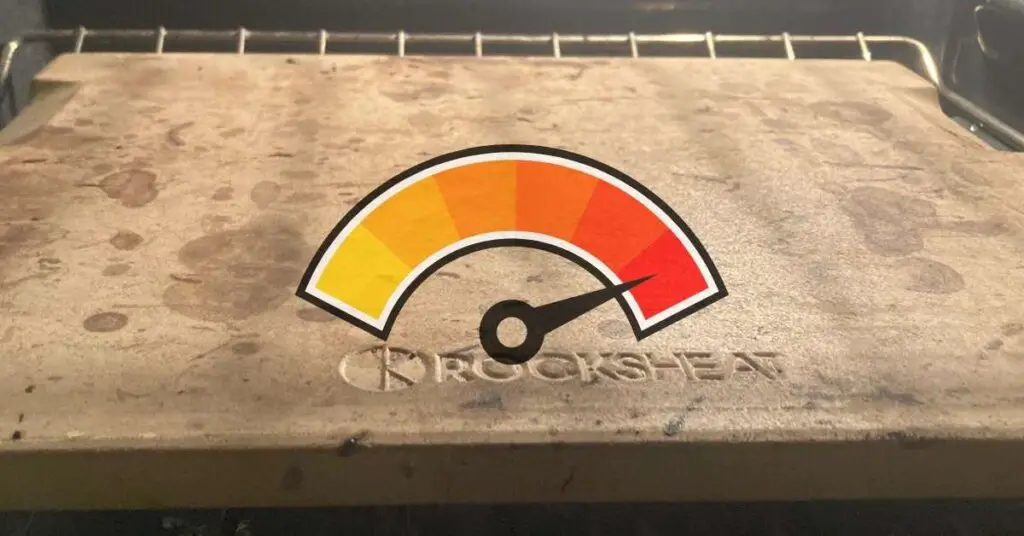
What Temperature Do You Preheat A Pizza Stone?
A pizza stone is designed to replicate the hot stone surface of a wood-fired pizza oven. Under ideal circumstances, when raw pizza dough is launched onto a stone baking surface, the dough instantly begins to cook, transforming into a crispy, golden brown pizza crust within just a few minutes. This happens most efficiently when the pizza stone is as hot as possible.
A pizza stone should be preheated at the maximum temperature your home oven allows, which in most cases is 500°F. As the pizza stone preheats, it will absorb heat until the stone is completely saturated. Very often, with a thick, high-quality pizza stone, this will result in the stone actually becoming hotter than the listed maximum temperature of your oven.
This ability to absorb and emanate heat is one of the great advantages of using a pizza stone, especially in a lower temperature home oven.
Related Post: How Much Does A Wood-Fired Pizza Oven Cost?
Note: If you’re looking for a pizza stone, I use this one. It’s very effective and super affordable.
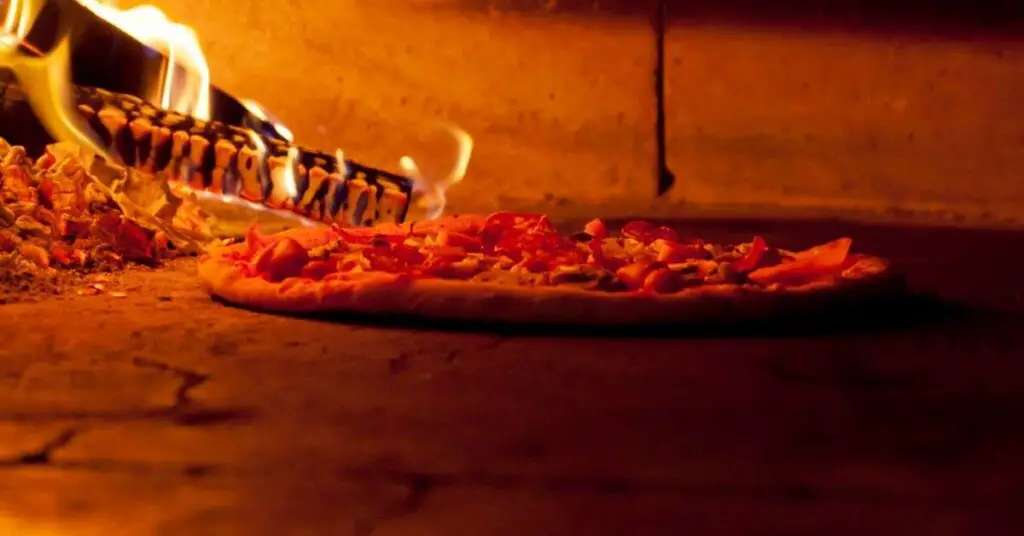
A pizza stone makes your oven hotter
A typical home oven can only reach 500°F, at least according to the manufacturer. However, in reality, most home ovens are inefficient, and can realistically only reach temperatures of 485°F or lower. Combined with hot and cold zones within the oven itself, this is a less than ideal environment for cooking something like pizza that requires high, consistent heat for best results.
A pizza stone helps to solve this heating problem by providing a hotter and more consistent temperature than your home oven can otherwise maintain on its own. Think of your pizza stone as a kind of heating brick that helps your oven stay hot, in the same way a large block of ice helps a refrigerator stay cold.
A pizza stone also helps to even out the hot and cold areas of the oven for a consistent temperature during the entire cooking period. This makes it less likely that your pizza will be under-cooked on one side versus another, and reduces the number of times you need to rotate the pizza mid-cook.
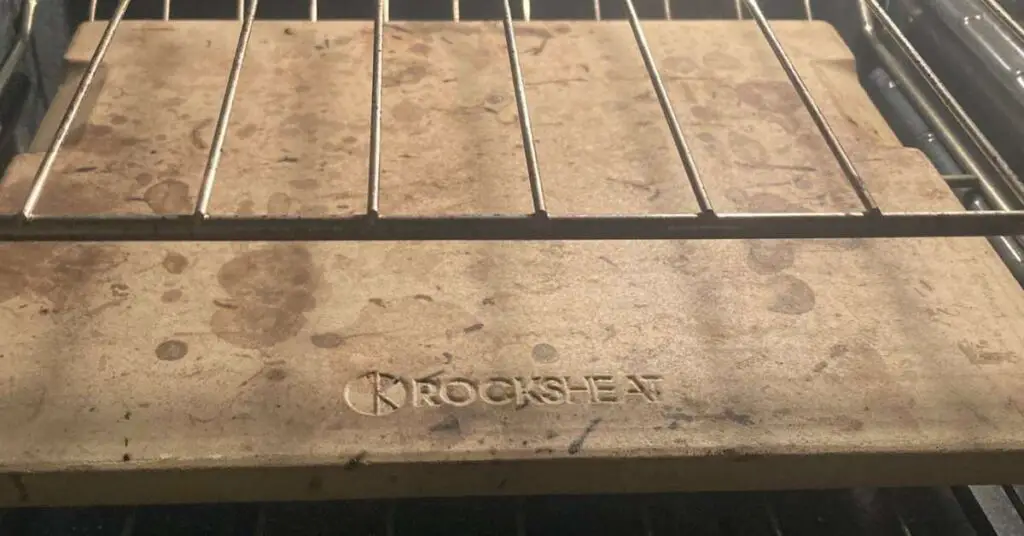
Pizza Tastes Better When Cooked Quickly
The hotter your pizza stone, the faster your pizza will finish cooking. This is not simply a matter of convenience—pizza tastes better when cooked as quickly as possible.
The reasons for this aren’t immediately obvious, but they mostly have to do with hydration. The longer a pizza dough is in a hot oven, the more water is evaporated from the crust. The less water in the crust, the drier and crunchier it will be when it’s finally time to eat it (not good).
By contrast, a professional Neapolitan, or wood-fired, pizza oven reaches temperatures of up to 1000°F, allowing for a pizza to cook in as little as 90 seconds from start to finish. In this short period of time, very little moisture is lost. This is a big part of what gives Neapolitan pizza crust its characteristically crispy outside and tender middle.

To achieve some of this in a home oven, two things are necessary: a hot pizza stone, and a high-hydration pizza dough recipe.
The hot pizza stone helps to reduce the overall cooking time, while the high-hydration pizza dough prevents the crust from drying out completely as it cooks. This is really the only way to get a crispy yet soft and chewy pizza crust in a home oven, especially around the edges.
Tip: If you need a high-hydration pizza dough, you can try my 70% hydration recipe. Or, if you’re a more experienced baker, you can check out my high-hydration poolish pizza dough recipe for the fluffiest and most tender pizza crust ever.
How Long Should You Preheat A Pizza Stone?
To reach its maximum temperature, an average pizza stone should be preheated for 60 – 90 minutes. This extended preheating period will allow the stone to fully absorb the maximum amount of heat generated by your oven.
However, it’s not quite so simple, as different pizza stones and ovens vary in the amount of heat they can generate and absorb.
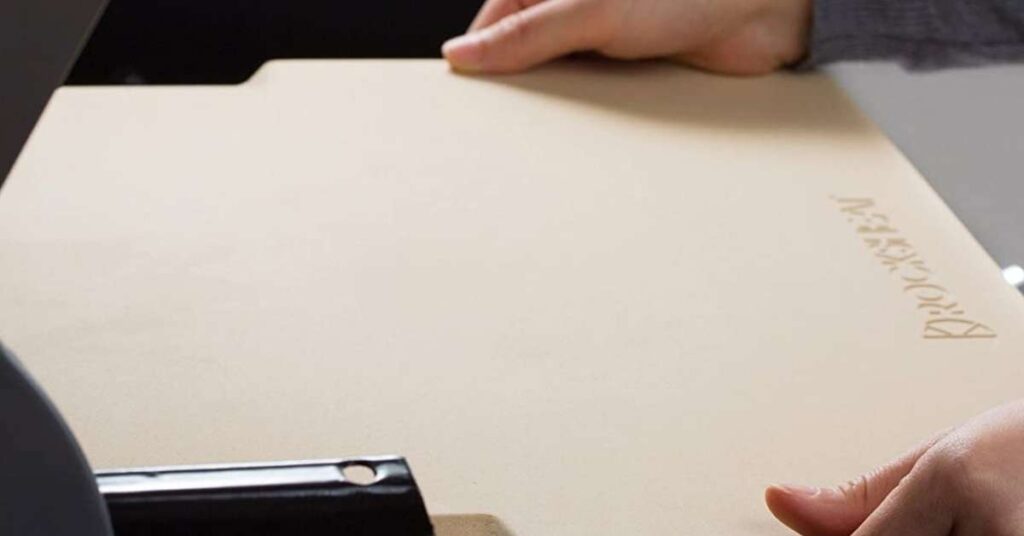
In my personal experience, with my 500°F oven and 0.63 inch thick pizza stone, 60 minutes is just enough time to get a reading of 535°F on the surface of the stone. Preheating for 90 minutes brings the surface of the stone to 545°F, and anything beyond that yields no increase beyond 545°F.
This is why I consider preheating for 60 – 90 minutes to be the “sweet spot” for the best results. Your experience will vary, but I would expect mostly similar results.
For reference, this chart shows how hot my pizza stone gets after different periods of time in my 500°F home oven:
| Time | Temperature |
|---|---|
| 0 mins | 75°F (24°C) |
| 15 mins | 320°F (160°C) |
| 30 mins | 490°F (255°C) |
| 60 mins | 535°F (280°C) |
| 90 mins | 545°F (285°C) |
| 120 mins | 545°F (285°C) |
As you can see, the pizza stone reaches a temperature near 500°F in just 30 minutes, then slowly builds up more heat over the next hour until it reaches saturation at 545°F sometime beyond 60 minutes. The ideal is to get the pizza stone as hot as possible, so its worth waiting up to 90 minutes. However, this chart tells me that if you’re in a rush, letting the stone preheat between 30 – 60 minutes should be good enough for decent results.
Pizza Stones Retain Heat Extremely Well
To give you an idea of how good pizza stones are at retaining heat, check out these temperatures I recorded over the course of an hour of leaving the hot pizza stone to rest at room temperature outside of the oven.
| Time | Temperature |
|---|---|
| 0 mins | 545°F (285°C) |
| 10 mins | 320°F (160°C) |
| 20 mins | 250°F (160°C) |
| 30 mins | 195°F (122°C) |
| 40 mins | 155°F (69°C) |
| 50 mins | 130°F (55°C) |
| 60 mins | 115°F (47°C) |
| 70 mins | 90°F (32°C) |
This information will help you determine how long to leave the pizza stone alone before it’s safe to touch, as well as how long the stone stays hot if you’re using it to keep the pizza warm.
As you can see, the pizza stone stays relatively hot outside the oven for quite a long time. Considering that human skin can burn at temperatures over 115°F (47°C), I recommend keeping the stone well out of reach of children and pets for at least 70 minutes after use. At this point, the stone should be safe to touch again.
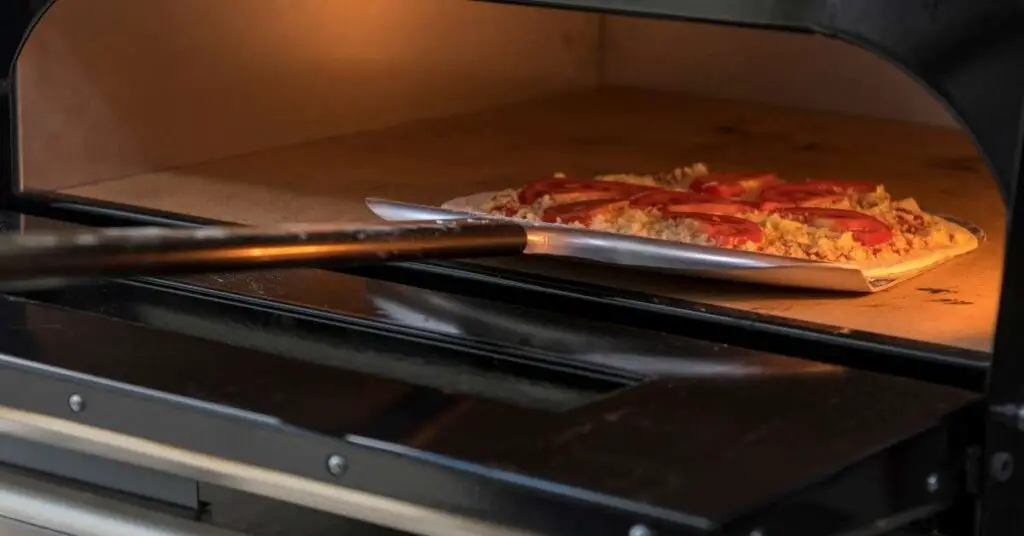
The only thing better than a pizza stone is a pizza oven.
Find the best oven for you, cheaper than you think.
How To Check The Temperature Of A Pizza Stone
You might be wondering how I’m able to check the temperature of a hot pizza stone. For that, I use a tool called an infrared thermometer.
An infrared thermometer is a simple, inexpensive tool that shoots an infrared beam at an object to instantly determine its temperature.
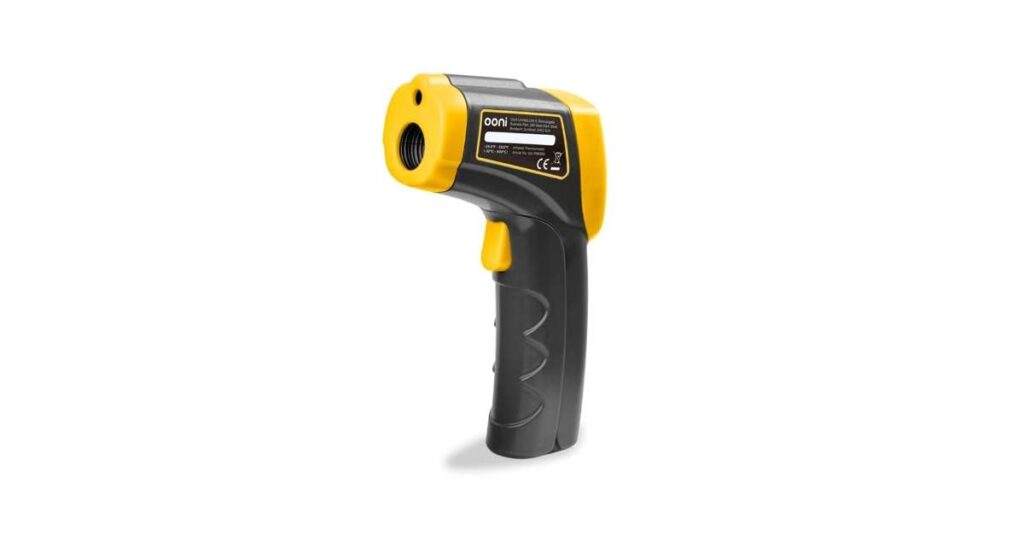
While of course not necessary to use a pizza stone, an infrared thermometer lets you know exactly when your pizza stone has reached its maximum temperature. I recommend using one when you first get your pizza stone to figure out exactly what its max. temp. is and how long it takes to reach it. This will give you a baseline to work from to use your pizza stone the most time and energy efficiently.
You can buy infrared thermometers almost anywhere, but I can personally vouch for the one offered by Ooni. Otherwise, there are several to choose from on Amazon.
Tip: If you can’t get hold of an infrared thermometer, just follow the chart above. In most cases, you can assume the pizza stone is ready to use within 90 minutes.
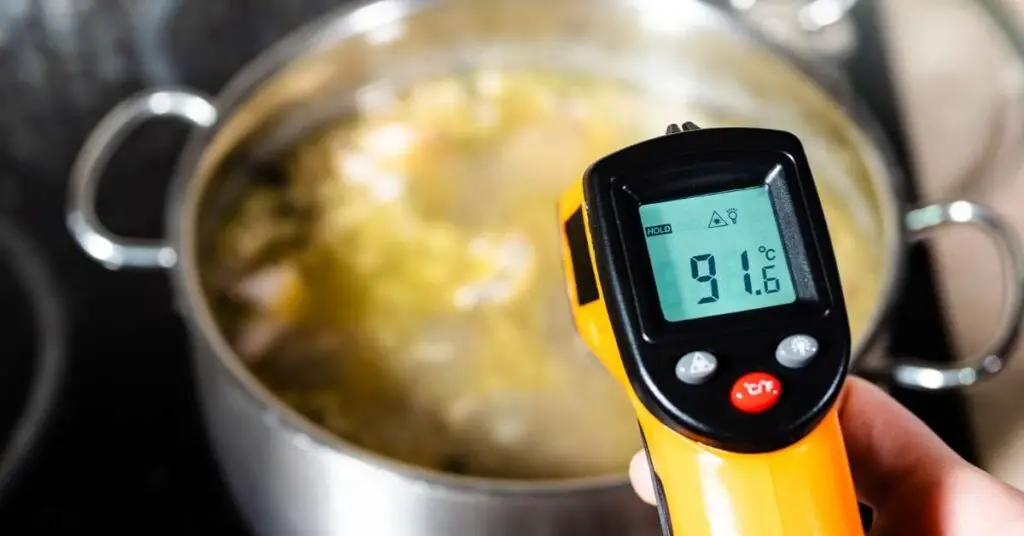
What Pizza Stone Do I Recommend?
In case you’re wondering, I can offer the following advice when buying a pizza stone:
- Look for the biggest pizza stone that will fit in your oven.
- Look for the thickest pizza stone available, for better heat retention.
- Always choose a square or rectangle pizza stone, never circular.
A pizza stone should ideally fill up as much of the oven rack as possible, allowing for the biggest pizza possible. This will also give you lots of room to maneuver, even when working with a smaller pizza.
A pizza stone should be as thick as possible as thick stones retain heat longer. However, be aware that the thicker the stone, the longer it will take to reach its maximum temperature during the preheating phase.
A pizza stone should be square or rectangle, like the surface of a pizza oven. This allows for enough room to properly launch the uncooked pizza and prevents dough from falling over the edges. Circular pizza stones are too small, especially when you consider that pizza dough retracts a bit as it cooks. This means that a 12 inch pizza stone will realistically only be big enough for a 10 inch pizza.
As for specific recommendations, I currently use this Rocksheat Pizza Stone made from 0.63” thick cordierite. At 12 x 15 inches, this rectangular pizza stone is just big enough for my oven. It does a great job giving my pizza crust a rich golden brown and is very reasonably priced.
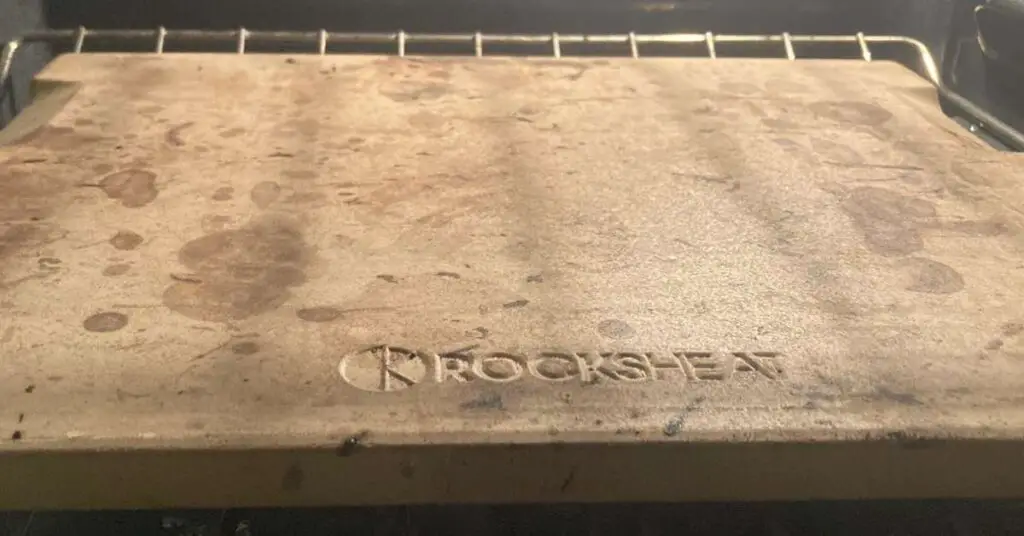
Related Posts:
- Pizza Pan vs Pizza Stone – Which Should You Buy?
- Should You Oil A Pizza Stone? No – Here’s Why
- When To Put Your Pizza Stone In The Oven
- How To Transfer Pizza Dough To Pizza Stone Without Sticking
- How To Use A Pizza Stone For The 1st Time & Make Amazing Pizza
Related Questions:
Do You Need To Preheat A Pizza Stone?
Yes, a pizza stone should always be preheated before use. A pizza stone needs to be extremely hot, preferably above 500F (260C), in order to bake the pizza crust fully and efficiently in a short period of time.
Can You Use A Pizza Stone Without Preheating?
No, you cannot use a pizza stone without first preheating it. In fact, cooking on a cold pizza stone is worse than not using a pizza stone at all, because the stone will block heat from the oven and prevent the crust from cooking. A cold pizza stone will produce a pizza with overcooked toppings, a pale and under-cooked crust, or both.
Do you need To Prep A Pizza Stone?
In most cases, a pizza stone does not need to be prepped other than preheating it before use. A pizza stone should never be oiled or seasoned as this will cause the stone to crack and smoke under extreme heat.
What Temperature Do You Heat A Pizza Stone?
A pizza stone should be heated at the highest temperature possible for your oven. In most cases, this will be around 500F (260C), allowing your pizza stone to reach a temperature of 545F (285C) or higher within 60 – 90 minutes.
Should I Oil My Pizza Stone?
You should NEVER oil or season a pizza stone. Pizza stones are designed to cook dry materials, or dough with a slight amount of water moisture. A pizza stone is not designed for substances like oils or fats as this will burn onto the pizza stone, causing it to smoke or crack when it heats up.
Why Is My Pizza Stone Sticking?
There are two primary reasons why pizza sticks to a pizza stone: fat dripping onto the stone while it cooks, and a pizza stone that isn’t hot enough. When fat, like oil or cheese, drips onto a stone while it cooks, it cause the crust to stick. Also, when a pizza stone isn’t hot enough, the dough can end up stuck to the stone until it has a chance to fully cook. Always make sure your pizza stone is as hot as possible, with cheese and oil far enough from the edges of the crust so it doesn’t drip off.

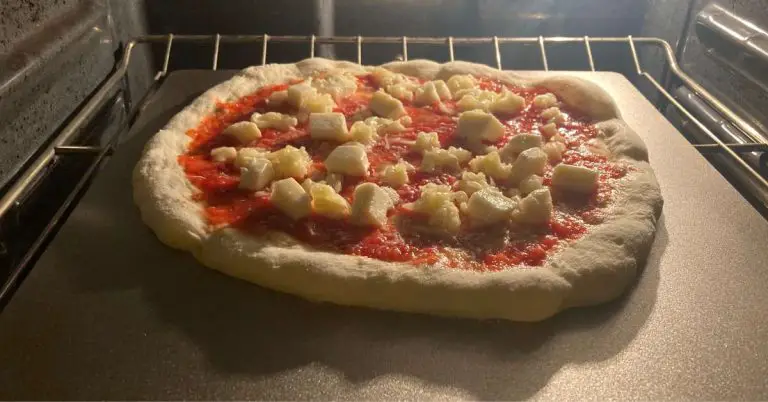
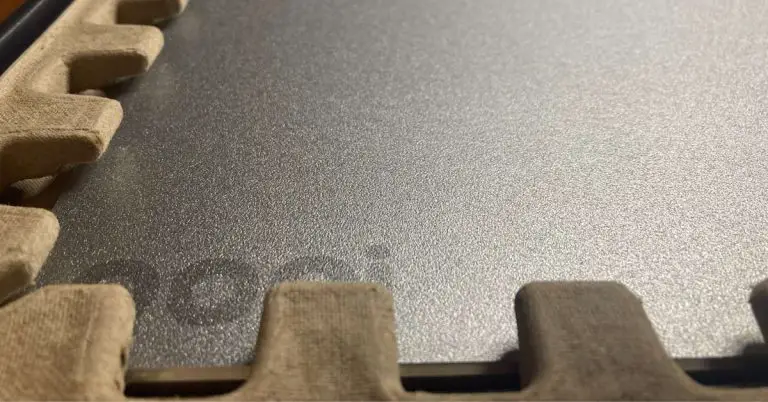
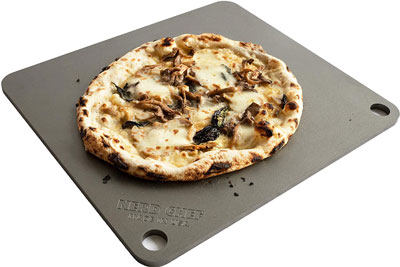
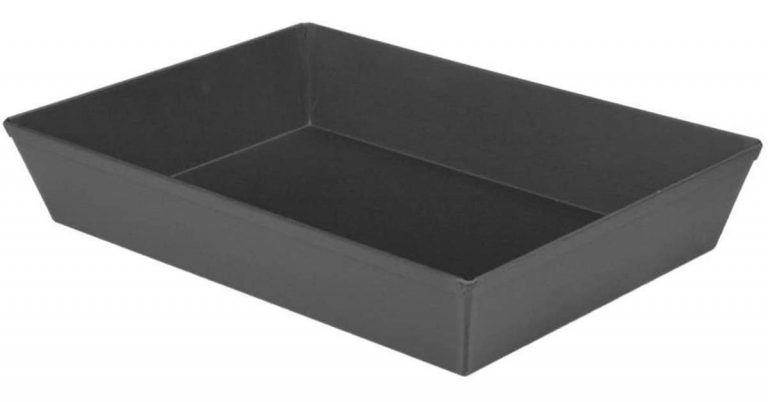
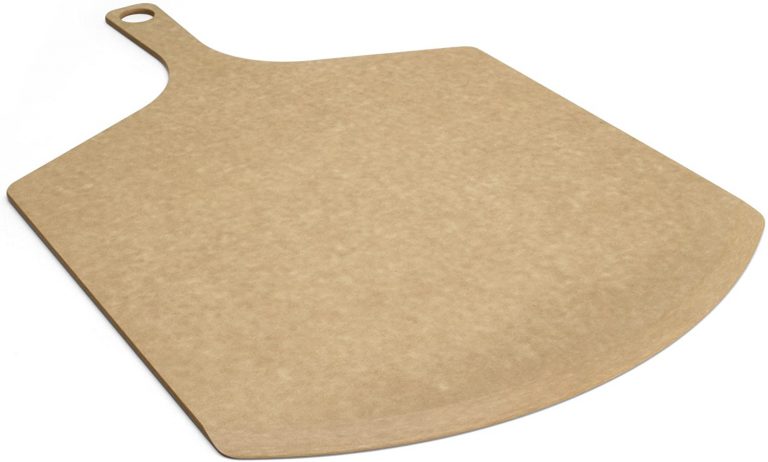

Is it possible that a heavily used or old pizza stone pizza stone absorbs oils from the cheese and meat and then need replaced? Or, does that always burn off?
Hi Michael. A pizza stone will absolutely absorb oils and fats over time, especially if its been heavily used. However, unless it’s smoking or cracking, you probably don’t need to replace it just yet. That said, a pizza stone is relatively cheap, so it might be time replace the old stone with something better, or even upgrade to a pizza steel instead. Good luck!